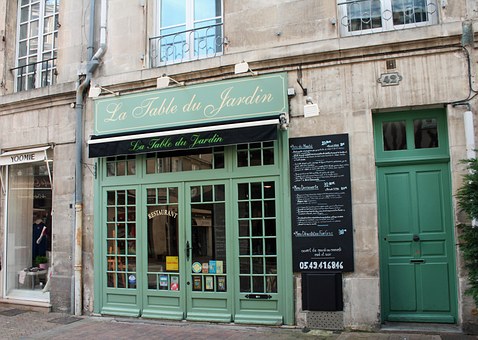
Many people think that French doors are any set of interior or exterior entryways that utilize two doors with hardware facing inward, toward one another. But there are many, many different kinds of double doors, from those we commonly see in residential areas to those we see in public spaces, including hospitals, grocers, arenas, and so on — these ultra-durable double doors are a far cry from the delicate elegance that French doors are. So, in the most authentic sense, what are French doors?
In fact, this has nothing to do with why a French door is called “French” in the first place. French doors, it’s true, are nearly always double doors, but the reverse is untrue. In order for a door to be genuinely French, it must have glass panes from top to bottom — these may also be referred to as lights or lites by those within the industry. Rather than thinking of them as double doors, think of them as one, giant door split in the middle — much like a Dutch door is cut in half from top to bottom, a French door is one that’s been cut in half from one side to the other.
What are French Doors Best Suited for in Residential Architecture?
What are the French doors best uses in the home? Given that by definition these doors are intrinsically lacking in privacy, one thing they add is an excuse for decorative shutters, blinds, and draperies. Whether they are used for interior or exterior doorways, adding different levels of privacy shutters or draperies add to the beauty of French doors. While in most homes one side of the door will stay latched shut except to move furniture in or out of a room or sitting area, the level of privacy shades or shutters you’ll want will differ. For example, if your front exterior entryway is a French door, wooden shutters are the best option for privacy and resilience against the elements. Conversely, an office entryway inside the home utilizing French doors might add more to the interior design by adding sheer draperies or patterned horizontal shades that move up and down on a controlled pulley that keeps them in place both top-to-bottom and side-to-side with hardware and curtain-type strings.
What are French Doors Most Often Misunderstood for in Homes?
Most frequently, homeowners or anyone else in charge of paying the utility bills negatively associate French doors with inefficiency and mistakenly accuse them of not being a very green choice. The truth is, when installed properly and using today’ standards for energy efficiency, the best-made French doors are every bit as environmentally-friendly as any other door for use as an exterior entryway. The right weather stripping, doorjambs, insulation, and hardware make French doors as resistant to seasonal heat and cold as any other doors.
Posted in Home By
 Opanpan Door Skins
Opanpan Door Skins